LESSONS LEARNED
an introduction
by Annemarie van den Berg & Tanja Koning
These Lessons Learned combine the findings of the educational programme Collective Making with those of the podcast series Kunst is Collectief.
In Lessons Learned , Collective Making project leaders Annemarie van den Berg and Tanja Koning proposed five basic ingredients from which collectivity in the arts and art education can evolve, grow, and further develop itself.
How can you create the right circumstances for working together? A space to work, dream, or even to live in can be an excellent starting point for forming a collective. Being under the same roof together, sharing equipment, and meeting each other in the kitchen for a cup of coffee can pave the way to making together. Whether sharing a studio or consistently meeting each other on the same square, a fixed location will provide a common context. The physical aspect of a loca - tion can also be approached from a psychological point of view: how can you create the time to be together and jointly discover what a collaboration might look like? In both cases, time and space play a crucial role as fertile ground for the formation of a collective.
The approach of the curriculum developed for the occasion was not to achieve a clear end result, but to see the process of making as a productive act in itself. Each day started off with a ritual and/or warming up aimed at generating attention and enabling the students to share their (individual) wishes for that particular day. The classroom was transformed into a living room for informal gatherings, and ultimately also functioned as a gallery for the final presentations.
Working collectively is a state of constant movement, not only with regard to time, but also to the various forms it may take on. It seems that there are just as many ways of forming a collective as there are collectives themselves. Each collective has its own working method, traditions, and history. Working collectively is an organic process that, in most cases, arise from a collective interest in certain themes, shared convictions, or spontaneous encounters in a café, cultural hotspot, or a mixed-use location for living and working that can also be fertile ground for collaborating.
The various methods for working together within each artist collective are impossible to capture in success formulas, organisational charts, or manifestos. Each collective has had to figure out what works for them; it is a continuous process of reinvention. Nevertheless, certain elements, such as common ideals, an open attitude, and/or a shared desire to work together, are always present. But how the members of the collective will actually be working together and which forms these collaborations may take on are subject to change under the influence of both internal and external factors. There is no exact definition of collectivity. It is, however, possible to identify the essential ingredients of collectivity, although each artist collective will comply with these in its own unique way: sharing space, developing an organisational structure, relying on multivocality, relating to others and embracing not knowing, and enlarging gestures.
SHARING SPACE
RELYING ON MULTIVOCALITY
Collectivity is about radical equality, where every single voice counts, and ownership is shared. But how can you make sure all voices are heard? How can individual input stay intact amongst the communal ideas and wishes of the collective as a whole?
Engaging in conversation and truly seeing each other brings everyone involved closer together and nurtures the necessary mutual trust. This type of social investment causes friction and frustration, because listening to others requires a lot of time and attention. However, this is countered by the magic of ‘togetherness’: as a collective you are more than the sum of its parts, and this leads to layered projects that you would never be able to develop as an individual.
ALL VOICES HAVE EQUAL MERIT
Acknowledging that individual perspectives can and are allowed to exist alongside each other will create space to breathe. De School , for example, doesn’t use a single method for dividing the proceeds from participating in exhibitions or art fairs. The one certainty is that each individual’s contribution is reimbursed. Apart from that, all members have their own ideas about what the rest of the financial picture should look like. Some of them enjoy the experience of earning money with their own work, while others feel awkward about dividing the proceeds when they haven’t sold anything themselves. The members of this collective respect each other’s opinions and allow these to exist next to each other. Whenever a lack of consensus leads to uncertainty, they try to approach this as an exercise in realising that not everything is, or has to be straightforward.
LISTENING TO EACH OTHER
How can you take responsibility for what you say, do, or mean within the collective? Are you a dominant person, or someone who is being overshadowed by the other members?
Some collectives are questioning their own (internal) working methods, assumptions, and preconceptions. An expert or coach might be called in to help deconstruct patterns of inequality, for instance. Club Gewalt experienced firsthand that the search for multivocality can be painful as well as productive. In their anniversary performance 10 Year Anniversary: A Choir for Killjoys , Club Gewalt researched what effect systems of racism and white privilege have on a personal level, namely within the collective itself. By incorporating this in a theatrical performance, they poignantly confronted the audience, and therefore society, with their insights. During the entire work process, from concept development to dramatisation, all individual voices were treated as equally important.
Grant applications, bookings, social media posts, administration, setting up exhibitions, et cetera: the creative process involves so much more than simply elaborating on an idea. In collectives these tasks are often divided among its individual members, as is also the case for BOYBAND, de literaire boyband . These five makers have each been given their own organisational tasks and manage these via various WhatsApp messaging groups: one is responsible for bookings, the other is Chief of PR, and yet another is Head of Finances. In order to use their time as efficiently as possible while leaving enough time for writing new lyrics, they hold separate meetings.
TIME MANAGEMENT
Spending time with each other is vitally important. All collectives involved have fixed moments for meetings to discuss artistic developments and organisational matters. These two elements are often dealt with separately. Many collectives, for instance, talk through all practical matters on Monday morning, leaving for discussing artistic content and personal things during the rest of the week. By creating this separation, the decision-making process remains clear.
DEVELOPING AN ORGANISATIONAL STRUCTURE
Collaboration requires a clear organisation: from developing a concept, devising frameworks, and presenting the work, to distributing practical matters such as working hours and tasks. This mainly happens on the basis of personal needs, preferences, and opportunities. What will you do with the available time? How can you determine who will do what, and when? How can you combine working with the collective alongside individual work? In preparation of Kunst is Collectief all collectives were asked to visualise their collaborative structure on paper. None of these drawings were alike! While companies often work with formal, straightforward organisational charts, the collectives’ visualisations were colourful and contained rounded shapes and idiosyncratic constructions.
SETTING FRAMEWORKS
Frameworks can be helpful tools for dealing with collaborations. These may involve a (fixed) location and having meetings on a particular day of the week, but also working with materials, artistic medium, or colour.
DIVISION OF TASKS
By setting the parameters of a framework in advance enables you to determine together how you are going to work and what goal to achieve. In the case of the project by FreelingWaters , the set framework is to realise an enormous mural. For a week, 18 students from different courses worked continuously on this painting in the canteen of ArtEZ in Arnhem. Five colours were used, creating unity in the composition, despite the many handwritings and working methods.
WITH EXPERTS
People who enter into collaborations with experts from other professional fields such as scientists, journalists, rubbish collectors, or bakers do well to formulate research questions that leave enough space for unexpected answers, counter-questions, observations, analyses, and associations. It creates a common area where new ideas can flourish. This is why Esther Kokmeijer enjoys working with experts. In her work, she questions the origins of nature and how it is being formed and deformed by humans. Through the knowledge contributed by scientists and other professionals, the boundaries of the subject matter are stretched, deepened, and broadened. For example in the River Families project, the students discovered the similarities and the differences between art and science.
IMMERSING YOURSELF ON LOCATION
How can you relate to social or political contexts by using a specific location as a starting point? Every place is different: each community has its own individual character, shaped by things like political visions and distinctive customs. Uncovering these facets requires creating space for the unknown in addition to preparation. Pink Pony Express frequently ends up in places marked by political tension. Beforehand, the collective investigates which parties or people are involved in the chosen location, and the trio is open to spon - taneous encounters in the local pub or church, for instance. The ‘not knowing’ is slowly fleshed out through projects that where location, people, and politics exist in reciprocity.
RELATING TO OTHERS AND EMBRACING NOT KNOWING
CHECKING IN
Artists and designers who wish to work with others whether in a collective or with ‘the other’ in general invest a lot of time and effort into searching for structures and contexts where they can encounter these others, and in creating a space where exchanging images, thoughts, and actions is possible. Different perspectives that may exist within the collective, will certainly also exist in the outside world. How can you encounter the other on an equal footing? What does the other know that you do not, and how might this be relevant to your work? Not knowing something places you in a vulnerable position as you no longer have access to readymade answers.
Because of the close contact and entanglement of life and work, it is important to make space for personal matters in a light-hearted way and thus make it easier to discuss emotions, desires, and fears. Collectives can draw from a wide range of methodologies for figuring out each other’s emotions, and many of them are implementing these ‘check-ins’ in a playful manner. For upcoming projects, the members of Questions Collective arm themselves by placing bets on strange events that may take place. Metaphors like ‘What type of candy are you feeling like today?’, gaming elements, and standard forms taken from self-help manuals are also used to map how everyone is doing and what roles emotions are allowed to and might play within the collaboration. The students experienced firsthand what it was like to take up a vulnerable position by bringing their own sensitivities to the table, but by expressing out loud what things they had run into, it prevented them from getting stuck and enabled the others (in this case their fellow students) to help.
JOINTLY TAKING CARE (OF THE STRUCTURE OF MEETING)
There is no clear final goal or end result. Make no mistake, not knowing is not necessarily a dark hole dominated by doubt. Even more so, instead of regarding it as a sign of ignorance, not knowing might even be used as a method. By adopting an open attitude towards working methods focused on experimenting with and discovering the unknown you can actually embrace the concept of ‘not knowing’.
Apart from collectives that are made up of a fixed group of individuals, there are also more open collectives that are formed in an organic way and remain porous. For these it is important that all people involved have the freedom to leave the project or collaboration at any time they feel the need to, while still leaving the door open for them to return at a later stage. Collective making is a state of constant movement, partly because of the transitory nature of the surroundings and of time. This can lead to rotating tasks or roles. Even Jeanne van Heeswijk does not consider collectivity to be a constant factor. She nearly always works on projects on location, in close collaboration with local residents, authorities, organisations, and other experts. In order to take care of each other in the process, the artist pays close attention to setting up and arranging get-togethers. For these gatherings she uses ‘rotating leadership’, with constantly alternating chairpersons. Other changing roles are those of the ‘note keeper’, the ‘temperature keeper’, and the ‘echoer’. During the meeting, the ‘echoer’ is asked (several times) to tell in their own words what they have heard, to make everyone aware of how other people listen, and whether everyone is on the same page.
LESSONS LEARNED
a conclusion by Annemarie van den Berg & Tanja Koning
Artists are working together more and more intensively, but that does not mean that collectivity is self-evident. Finding collectivity contrasts sharply with the still predominant idea of the individual artist who imagines their own experiences from their own individual perspective and shares these with the public. The Lessons Learned show that collective practices can coexist with individual artistry. This sheds a different light on new, embodied, and well considered scenarios for both art and education. Elements from the Lessons Learned can find a way into art education and contribute to fruitful exercises in collective making. In order to put collectivity permanently on the agenda within art education, thorough internal research is needed in departments and among teachers on how to guide and assess collective work (processes) without the need to reduce individual efforts. The research programme
Collective Making was set up out of the need of ArtEZ Art & Design in Arnhem to encourage collaborations between different departments within the art academy. Project leaders
Annemarie van den Berg and Tanja Koning invited students, teachers, and artist collectives to help shape in this research:
collective’s members listen and tailor their behaviour.
SUPPORT It gives confidence to know people around you who know you through and through and who are willing to spar. Collectivity offers a basis, a foundation. Knowing that you belong to a “little club", can make you feel empowered when you are working as an individual outside of the collective. Whether it concerns a band, posse, or artist collective, as part of a collective you always feel protected and supported by the other(s). Because you have each other, you dare to do more. This is a recurring theme for all collectives involved in Collective Making and Kunst is Collectief . Fellow makers who know your process, support you, experience and witness you, creates space for deepening and reflection within individual (and collective) artistry.
BROAD GESTURES
‘We are convinced that collectivity can lead to many innovative answers to complex societal issues. Radical equality and ecological connections with non-human forms of existence are needed for a more inclusive world.’
In addition to substance of your work, collaborations can provide opportunities for practical benefit after all, many hands make work lighter. Within a short time frame, a lot more steps can be taken that you would not have dared to take as an individual creator. Working in a collective exponentially increases the work capacity, allowing larger jobs to be taken on, both in terms of artistic and organisational facets. The members of We Make Carpets describe their working process as a machine running at full speed. It is similar to a conveyor belt: one of the members lays out the pattern and the other two copy it. This relay system results in an image that is defined by the differences in their individual handwritings. They have now become so well-attuned to each other that they are able to say ‘Yes!’ to ever-larger projects, because they amaze themselves in what they manage to realise in a short time.
A collective is much more than the sum of its parts. Fed by the input of its members, who each have their own behaviour, experiences, and habits, the collective becomes ‘something in its own right’: an identity of its own. This is very clearly the case with performance collective BOG. . During the process of creating its first performance BOG. een poging het leven te herstructureren [BOG. an attempt to restructure life] the collective worked with texts in the shape of lists. To the collective, language is not only material, but also subject matter. The lives and work of the members of BOG. would have been very different if this process had not involved lists. The fact that the collective’s work gradually moved towards linguistic (theatre) performances, thus fundamentally influenced and shaped all its individual members. To depict their working method, BOG. itself uses the metaphor of a child. The collective compares itself to a child that is growing up and slowly maturing as time passes. It is an self-contained entity, to which the
Collectivity can be entered into both human and non-human, such as nature or the economy. In most cases, new ways of communicating will then have to be found. Getting under the skin of ‘the other’ enables you to perceive the world in a different way, and thus to see the roles of humans, non-humans, or systems from a different perspective. De Onkruidenier works with non-human actors in order to bring the public closer to nature. The collective creates actions and tools to develop a new relationship to the existing landscape in conjunction with the visitors.
ENLARGING GESTURES
Anyone involved in a collective will agree that only a few things are as time-consuming as maintaining a collective; it requires a lot of attention, energy, and time to stay on the same track together, to attach equal value to all individual voices, and (whenever necessary) to come to a consensus. Any member of a collective will furthermore stress that the collective surpasses the individual, how valuable it is to have a "little club” to fall back on, and that being a part of one will enable you to make broad, collective gestures.
THE COLLECTIVE AS AN IDENTITY IN ITSELF
COLLABORATING WITH NON-HUMANS OR SYSTEMS

Collectief Z o m e r e n currently consists of an assemblage of six women –Aliki van der ,Kruijs Lenn ,Cox Melanie ,Bomans Niki ,Milioni Rosanne van Wijk and Sanne Karssenberg – who all have their own artistic or design practice and all have a background in fashion. Another thing they have in common is that they all work in education in one way or another. The collective evolved out of the need for collectivity and sharing their professional practices and daily lives, while the six women also explore how the ‘I’ relates to the ‘we’, and vice versa. Within the cultural sector, Collectief Z o m e r e n realises this through organising workshops, moments of interaction, and in-depth programmes.
Love, Collectief Z o m e r e n
With this letter we, Collectief Z o m e r e n, invite you to train your -imag ination, and encourage you to keep making space and to keep giving time to yourself and to each other. Create an -‘in-be tween’ in your own space and time – in your own place, in your own combination of -exist ing energies, in your own -sea son. In doing so, ask yourself what you would like to -culti vate, with whom, and what -sup port you will need. The -acti vations in this letter provide guidelines for your own manual. Have fun summering!


All of our -differ ences bathe in the same water, the same ether, earth, fire, and words. Stories in the air we share. Carried by the earthly body, embraced by the cosmic body. We all know what a circle is. But how do you make a -cir cle from -together ness? How round is she, and how big or small? Together we circle summering round as -con tinuously moving little circles that touch each other. The ways in which we approach, organise, and structure our lives is central to Collectief Z o m e r e n. What we make and do together revolves around this. The care we take goes beyond a concept of incidentally participating in a project. It is something we keep departing from and returning to. And that takes discipline. Devotion. Charged with the meaning: ‘stay with it’. Space and time (no -mat ter how much or how little) where momentum is created to venture inside while we are outside. Or to venture outside while we are content inside. Space to dance. To us, the concept of -sum mering also means getting a grip on reality: working together to strengthen the reality we share. S u m m e r i n g, written with expanded space – extending space.


life. Where life becomes work and work becomes life. Being collective is not always -per ceived as easy and -comforta ble. Heartache, work pressure, powerlessness, stormy weather, mental and physical -exhaus tion, insecurity. Just -know ing for a moment. Enjoyment, discoveries, pleasure. Everything is allowed to be. Vulnerability and discomfort are allowed to storm, stream, steam. Since we started -ferment ing, writing, walking, -pre serving food, patch working clothes, and facilitating workshops together, a culture of summering slowly but surely evolved. The cider we made using the sour apple variety Lena, which needed to mature over spring to become more -fla voursome, also gave us the insight that the time we -collec tively invest into processes is -nec essary. To loosen what is present and allow it to -recon nect, to deepen, and to strengthen.
To summer is no Sunday; it is connected to and with all days of the week. With daily
With the occasional glass of collectively brewed cider, while writing a letter to your future self. To summer keeps you healthy. Sharp, yet soft.
Flying a kite. Launching a -bal loon. Sharing lunch together.
To summer is to create space for the light that may shine through the leaves of the trees, casting moving -shad ows. Drawing with your feet. Speaking like the sun. Going outside early in the -morn ing. Touching the dew drops with your toes. Articulating an intentional verb. Sharing mutual reflections makes it possible to collectively shed a new light on the space; casting a sharper or softer light on that which requires attention. For a day, a season, or a year. The wind through your hair.
years, we have made a conscious movement to concretise, to cultivate, to enter into, and to trust in a network of links to reality based on the -connec tions existing amongst -our selves. This is the base camp, the soft soil to stand steady on and to give direction; to consciously experience the dynamic of being moved by -emo tion. To summer is what we do together, how we take care of each other and the world.
Summering together over the
rently consists of six women who have come to think of summering as a kind of movement. Together we explore how we can meet each other in authentic connection with ourselves, our individual practices, our relationships, the natural world, and the -pres ent moment, all within the -con text of a pressing neoliberal reality. We have done this by, amongst other things, -organis ing a summer camp together. With this letter, we attempt to draw up a manual for how to summer, based on our experience. Since four tent pegs are not the same as a fully-fledged summer camp, to summer will never cease to be an adventure. Summering doesn’t always require a tent; there is no fixed map, there is no single route. What is important is that you choose a moment consciously, -remain ing aware of what the season is doing. In this letter we introduce a series of activations with which we invite you to summer on your own accord. Then pack your things, your destination will reveal itself as you go, together you will keep an eye on the road. Trust your fellow travellers. To summer also means to train resilience. Creating an -envi ronment that provides -oppor tunities to thrive amongst the climate challenges and heat stress you may experience in a project, your practice, and your life. How do you deal with the pressure that can breathe down your neck in life and in work? We wondered how to do that in this uncertain and precarious cultural sector – in art education and in society at large. Would that require more trade unions for -in-be tween space, to help us support each other while moving between work and life and learning by experience? As far as we are concerned it does, because flirting and experimenting with what a support system might be and could entail is not -some thing that you have got -fig ured out 1-2-3, just like that.



Collectief Z o m e r e n -cur
To summer is a verb. To -sum mer has contours. It is -fol lowed by autumn and preceded by spring, and even the winter can be infused with summering. Not by flying away, but instead by landing together. That is why you need all seasons to summer.
do, to experience, to (un)know, and to get to know again. How do we people meet each other? How do we gather together, and which circumstances are -neces sary for that?
How can we teach you to s u m m e r together? How can we, as seasoned summerers, inspire and invite you to make space? To make space to open up, to slow down, and to embrace the in-between space. Check in with yourself, what you are longing to learn, to discover, to (un)
Dear reader, fellow future z o m e r a a r [s u m m e r e r],
19
18 June 2023, 08:00 - 09:30
17 June 2023, 10:00 - 11:11
8 June 2023, 09:00 - 11:00
3 June 2023, 10:30 - 11:30
by Collectief Z o m e r e n ‘You need all seasons to -sum mer,’ write Aliki van der Kruijs, Lenn Cox, Melanie Bomans, Niki Milioni, Rosanne van Wijk and Sanne Karssenberg of Collectief Z o m e r e n. It all started with a letter Lenn Cox wrote to the other five, an invitation to organise a summer camp with each other. From the need for commonality and sharing their professional practices and daily lives as well as to explore how the ‘I’ relates to the ‘we’, and vice versa. Invited by Kunst is Collectief the series in which we research what it means to be a collective the six-headed Collectief Z o m e r e n write a letter to the readers of Mister Motley. A letter as a manual: with various activators as starting points for -search ing and playing, the collective describes the various -compo nents of the verb ‘zomeren’ [to summer] and invites you to, by all means, put it into practice yourself. Amsterdam, Arnhem, Eindhoven, The Hague
TO SUMMER IS A VERB – IN SEARCH OF THE IN-BETWEEN SPACE
The installation is divided into 26 typologies with 26 specific capabilities, each linked to one of the potato varieties. Among the typologies are the artist, who -con tributes their own work to a project, as well as the activist, the educator, the camera operator, the sound operator, the reporter, the curator, the musician, the actor and so on. The chosen potato varieties are symbolic of those typologies and capabilities within a network. A network can expand itself through absorbing the information, history, and knowledge that is contributed by everyone, analogous to a sprouting potato: you can literally see the development of a new root pattern, with things becoming entangled and reconnected to each other.
The project Works, Typologies and Capacities uses 26 different types of potatoes to visualise all collaborations and projects undertaken by Van Heeswijk from 2001 to 2019.
calls a field of interaction: the area where all stakeholders have a place, resulting in a temporary collective. An example of this is the project Freehouse, which started in 2008 in the Rotterdam Afrikaanderwijk neighbourhood. This still ongoing project has since resulted in the establishment of the Afrikaanderwijk Coöperatie [Afrikaanderwijk Cooperation], encompassing a neighbourhood kitchen, a neighbourhood fashion studio, a neighbourhood cleaning service, and many mutual exchanges of knowledge and culture between the various residents.
June 2023, 10:30 - 13:30 20 June 2023, 11:00 - 12:00 20 June
14:00 - 16:54 28 June
- 15:00
2023,
2023, 14:00

← https://tinyurl.com/2e5jfw3c
According to Van Heeswijk, -collec tive making is never linear, but always a process of -continu ous development. She therefore refers to herself as an -initi ator or connector. Based on a -ques tion posed by an art space or -municipal ity, she engages in conversations with all kinds of -peo ple in the area to which that question relates. New -ques tions emerge from those conversations and encounters, which Van Heeswijk collects in what she
The artist Jeanne van Heeswijk is considered an important representative of a wider social engagement in contemporary visual art. Her large-scale, often longterm projects focus on creating imaginations of shared futures, always in -collabo ration with local communities. In her work she connects art to social design, societal problems, and political activism.
tivity or ‘collective’ refers to collective making, through imagining together what we think the future will or should look like.
series of Kunst is Lang features the artist Jeanne van Heeswijk. Although Jeanne van Heeswijk is, of course, not a collective on her own, she works collectively in all her projects, in constantly changing constellations. ‘Friction is an integral part of collectivity. No collectivity without friction.’ Her definition of -collec
Episode ten of Kunst is Collectief the final instalment of this special podcast
by the editors of Kunst is Collectief
#10 JEANNE VAN HEESWIJK

Sometimes one of them will come up with an idea and then ask the other four to respond to it, while at other times material will simply evolve while ‘jamming’. Their texts will then develop from ‘zeady’ to ‘ready’, with ‘zeady’ meaning the work is ‘in a very advanced stage’, and ‘ready’ meaning that all members of the boy band have agreed that the track is ‘ready to be performed’.
The material resulting from this evolves in an organic way.

The presentations they attended were nothing more than writers stooping forward to read from their own work. In the boys’ opinion this could and should be done -dif ferently. After all, the stage is a medium with its own conventions, which BOYBAND, de literaire boyband set out to use to make a wider audience more interested in and enthusiastic about literature. You only have to listen to Sinds ons success [Ever since our success] from their debut album In Canon to get an idea of what Koen, Martin, Jelko, Laurens, and Wout really think of writers who simply recite from their own work.The form of a boyband is a gimmick that stirs the imagination. The different -charac ters and extremes within the group for instance serious, tough, sweet can also be exploited. However, this form also leaves space for artistic research.
The five men first met each other -dur ing literary -eve nings that, -accord ing to them, ‘were incredibly boring’.
to sing along to, smouldering looks, and the constant threat of a break-up. By combining -lit erature with catchy pop tunes, sensual winks, and smooth hip moves, BOYBAND, de literaire boyband pushes the genre’s boundaries.
https://tinyurl.com/muwjemn7
←
‘Let us enrich literature with a boy band,’ and so it came to pass. Episode nine of Kunst is Collectief features BOYBAND, de literaire boyband. In this conversation, Wout Waanders, Jelko Arts, and Martin Rombouts explain how they combine a boy band with literature. ‘We are stealing from both sides in order to create some weird kind of Frankenstein monster.’ BOYBAND, de literaire boyband consists of poet Wout Waanders, cartoonist Jelko Arts, musician Laurens van de Linde, and the theatre makers Koen Frijns and Martin Rombouts. BOYBAND, de literaire boyband creates ‘screamable’ literature: poetry on stage, but with choruses
by the editors of Kunst is Collectief
#9 BOYBAND, DE LITERAIRE BOYBAND
 ↑ BOYBAND, de literaire boyband Adriaan van Discotheek, 2023. Photo: Wilco Lamers.
↑ BOYBAND, de literaire boyband Adriaan van Discotheek, 2023. Photo: Wilco Lamers.
Jeanne van Heeswijk It's OK... commoning uncertainties, twijfel cirkel #1 met Maria van Daalen, 2023. Photo: Maarten Nauw Photography. ↑ Jeanne van Heeswijk Learning object Works, Typologies and Capacities (Trainings for the Not-Yet), 2020. Photo: Tom Janssen.
↑ BOYBAND, de literaire boyband Adriaan van Discotheek, 2023. Photo: Laurens van de Linde.
↑


For the creation process, We Make Carpets always starts at the centre of the future carpet: there, by grouping the bulk-bought objects, the first patterns emerge. The members of We Make Carpets create their site-specific carpets in a focused, attentive, and meticulous way. While one lays out the objects, the other two copy. They all keep a close eye on each other and follow the patterns appearing under their hands.
The result is shaped through improvisation, playfulness, and conversation. But what happens to those huge numbers of scouring pads, paperclips or garlands after the project is completed? Marcia, Bob, and Stijn explain that their practice is increasingly focused on sustainability and reusing materials. Today, more and more objects are donated, recycled, or stored.


Episode eight of Kunst is Collectief features -design ers Marcia Nolte and Stijn van der Vleuten, and visual artist Bob Waardenburg. They make carpets by creating patterns with everyday objects like scouring pads, plasters, pencils, and paperclips. The trio travels all over the world to make commissioned, site-specific installations from one type of object. As its materials, We Make Carpets uses everyday items like chip forks, -gar lands, and plasters that have some kind connection with the location and therefore -inter act with it. These materials mostly concern bulk-produced articles that were collected or purchased in large -quanti ties by We Make Carpets. The trio subsequently spends days, even weeks, arranging these products until a -fas cinating pattern emerges: an almost monomaniacal job. By repeating objects, We Make Carpets creates characteristic colourful and somewhat absurd temporary carpets, tapestries, or curtains.
by the editors of Kunst is Collectief
#8 WE MAKE CARPETS
Pink Pony Express conducts its research during the creative process. The collective’s members often come up with symbolic objects or actions that initially appear to be humorous but are actually meant to discuss serious issues. An example of this is the golden earring they designed in collaboration with fishermen from the Dutch village of Urk and which was subsequently worn by Dutch Minister Carola Schouten while attempting to protect the interests of the Urk -fish ermen during the Brexit -negoti ations in Brussels.
The members of Pink Pony Express live on location while -work ing on the project for months, in order to immerse themselves in what is going on there. For instance, the collective -trav elled to Sint Eustatius with the aim of researching the -res idents’ low level of trust in the democratic process. Local communities strongly impact the collective’s work, often in unpredictable ways. This results in opportunities for generous and eccentric exchange. The work is presented at the location where it was made. As the work gives something back that was never anybody’s property in the first place, these works might not be instantly recognisable to everyone.
Episode seven of Kunst is Collectief features Tara Karpinski, Cecilia Hendrikx, and Annemarie van den Berg of Pink Pony Express. The collective derives its name from the Pony Express: an express mail service that used a relay system of horseback riders to deliver letters and small goods from one side of the United States to the other in a relatively short period of time. The collective makes site-specific work, taking up residence in places where there is friction between the government and citizens.
by the editors of Kunst is Collectief
#7 PINK PONY EXPRESS
↑ We Make Carpets Pencil Carpet, 2017. Photo: We Make Carpets. ↑ We Make Carpets Pencil Carpet, 2017. Photo: We Make Carpets.
↑ Pink Pony Express De Kapitein, 2019. Photo: Pink Pony Express.
← https://tinyurl.com/277nn845 ← https://tinyurl.com/5bf5249z
↑ Pink Pony Express Waar is Willemstad, 2016. Photo: Pink Pony Express.
During this anniversary performance, Club Gewalt will explore the effect of systems of racism and white privilege their impact has led to experiences of inequality amongst the -mem bers of the collective. The collective finds itself right in the middle of a search for multiple perspectives and ways to be more inclusive, a process that involves a variety of -train ing programmes. The interim conclusion? Listen to each other and let others have their say. Although that may sound simple, it turns out to be a huge challenge.
Club Gewalt was founded a decade ago, which will be celebrated with the production 10 Year Anniversary: A Choir for Killjoys
The Rotterdam collective currently has eight members: Gerty Van de Perre, Amir Vahidi, Suzanne Kipping, Robbert Klein, Loulou Hameleers, Sanna Vrij, dramatist Anne van de Wetering, and business leader Rick Mouwen. Club Gewalt is fascinated by pop culture and the world as experienced by millennials. These fascinations are the point of departure for performances that can take on a variety of forms across various genres. From musicals about the end of the world to meditative operas, from ecofeminist punk bands to monuments for a drowning city, or something they describe as inimitable radio art.
In this conversation, the members of Club Gewalt talk about how the quest for multivocality can be painful as well as productive. Club Gewalt makes, composes, produces, and -per forms its own work. To them, music is an inevitable and connective factor in this process.
Episode six of Kunst is Collectief features Club Gewalt.


The name ‘Lowrey Foley McClane' is taken from Mike Lowrey, Axel Foley & John McCLane: three legendary pop culture icons who never play by the book, but always execute their heroic actions in a spectacular and charismatic way. LFMC creates a kind of posse: a home base, a house, a group of like-minded people who you can trust, who you can make things with, who you can brainstorm with, and who you can exchange ideas with. LFMC’s headquarters are located in Amsterdam-Noord since 2021. Apart from a meeting place, this physical ‘house’ is also a workspace and office, as well as a location where new talents, in the shape of interns and residents, are encouraged to explore what would be the best way for them to send their own stories out into the world.
If the story is relevant enough to tell, Lowrey Foley McClane will make it possible.

by the editors of Kunst is Collectief
#5 LOWREY FOLEY MCCLANE
The fifth episode of Kunst is Collectief features Brian Elstak, Edmée Loupatty, Giuseppe du Crocq, and Macarena Loma Yevenes of Lowrey Foley McClane. Lowrey Foley McClane (LFMC) is a production house composed of a group of culturally diverse, -interdis ciplinary makers, including visual artists, -program mers, photographers, producers, graphic designers, theatre makers, and -direc tors. Together they initiate projects that cover a wide variety of mediums: from podcast to talk show, from -chil dren’s book to photo book, and from dance event to an exhibition at CBK Zuidoost.
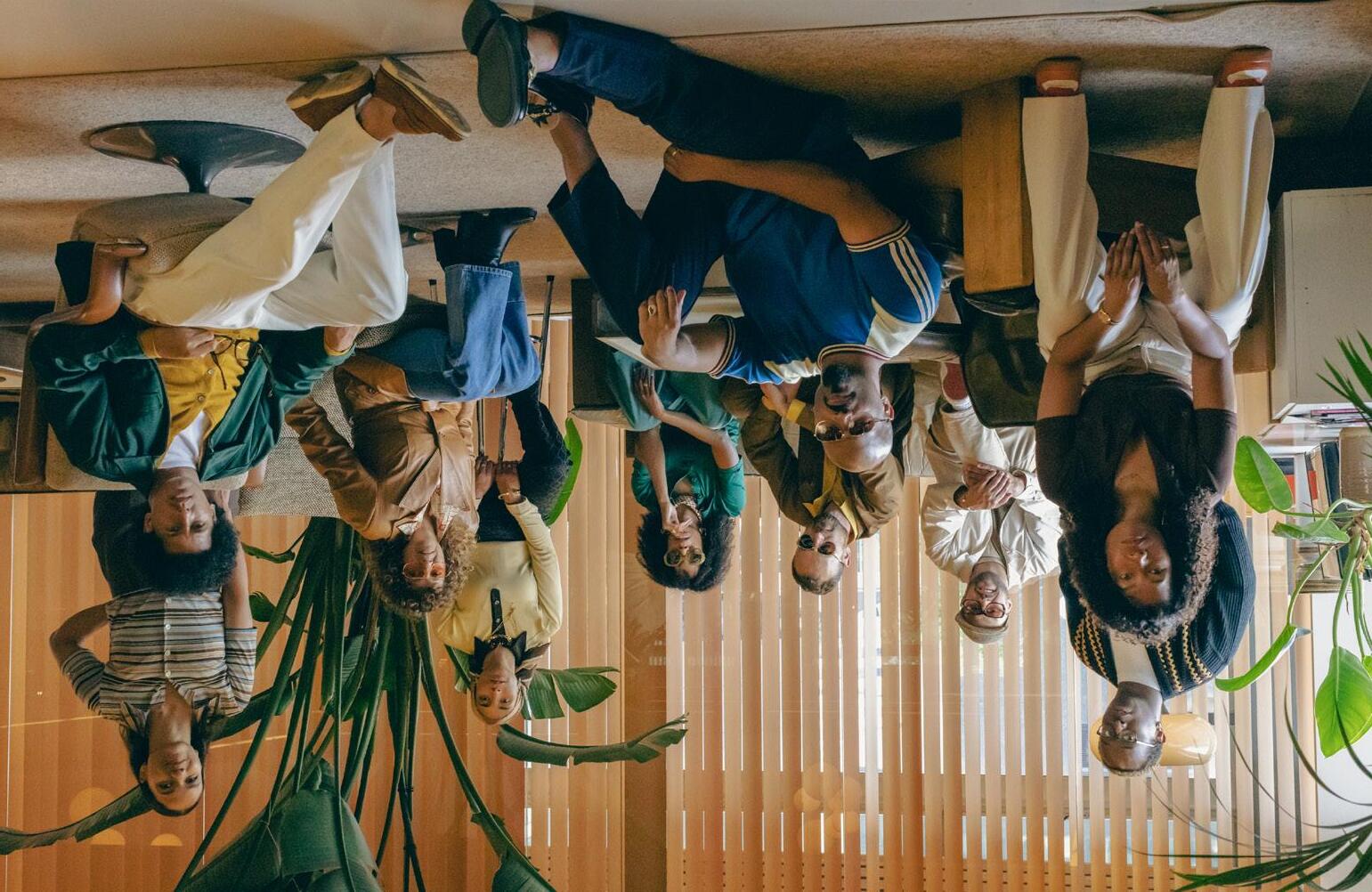 ↑ Lowrey Foley McClane Team Shot. Photo: Lowrey Foley McClane.
↑ Lowrey Foley McClane Team Shot. Photo: Lowrey Foley McClane.
Club Gewalt Antropoceen de musical, 2021. Photo: Bart Grietens. ↑ Club Gewalt 10 Year Anniversary, 2023. Photo: Bart Grietens. #6 CLUB GEWALT by the editors of Kunst is
↑ Lowrey Foley McClane Wall. Photo: Lowrey Foley McClane.
↑
Collectief
← https://tinyurl.com/hsy2kj5k
← https://tinyurl.com/5x4f677j

After the premiere, it briefly seemed as if that goal had been achieved. It soon became clear, however, that they had only tried out one of the many ways to capture the diversity of life BOG. then came to the radical decision to create a new performance once every decade, and thus to make a new attempt to restructure life once every ten years. Today, ten years later, this has led to BOG.2 een nieuwe poging het leven te herstructureren.
In 2013, while the four -mem bers were still in their -twen ties, their shared desire for -over view led them to making a first attempt at restructuring life as a whole in one single performance.
Language becomes a material and a subject matter in its own right in these performances.
Since its very first theatre performance BOG. een poging het leven te herstructureren [BOG. an attempt to restructure life] (2013), BOG. has been creating works on foundational themes that people are trying to come to grips with, but are actually too overwhelming to grasp. Based on the belief that they should look for what unites us as people, BOG. creates -uncom promising, quirky and open -the atrical productions for today’s seekers. These philosophical, linguistic, and musical -per formances deal with daily, recognisable issues that -every one has to deal with in their lives: opinions and beliefs, language, maturity, intimacy, time and movement, existential loneliness, mourning, and -iden tity. The collectively created performances form the core of BOG., but the makers also have their own artistic trajectories in which they develop themselves -indi vidually, resulting in solos, duets, publications, installations, and other works. reading something and in the words finding the human being and finding the human being at an empty bar somewhere in the countryside and on the bus in holding the pole to keep from falling over finding the human being across from you at at the dinner table unexpectedly finding the human being in your own mother, finding the human being in your phone the number of the human being call meet finding the human being BOG.’s performances invite the audience to think, experience, and let their associative thoughts run wild in the here and now. BOG. refers to itself as a performance collective.

‘Our way of functioning feels ‘round’ in contrast to all the square shit that -sur rounds us in the outside world’. The fourth episode of Kunst is Collectief -fea tures BOG., a collection (not a collective as it -con cerns an assembly of -individu als) consisting of theatre -mak ers Judith de Joode, Benjamin Moen, Sanne Vanderbruggen, and Lisa Verbelen, dramatist Roos Euwe, and business leader Anne Baltus. The members of BOG. often work in a collective way: together they come up with concepts, write texts, create stage sets, perform on stage, and form the organisation.
by the editors of Kunst is Collectief
#4 BOG.
capacity to that of the others. We felt extremely connected to each other. A form of -experi encing.’ This work touches on De Onkruidenier’s core values focused on the search for new paths between nature and -cul ture, and between making and undergoing.

‘It became a kind of joint learning process; although we did not yet know what the results would be, we still attuned our own lung
↑

What and how can we learn from the ocean? Artist collective De Onkruidenier is interested in how we in the present might imagine our future role in the ecosystem. The changing -rela tionship between humans and nature is an important point of departure. An example of this is the long-term project SweetSweat which explores how we as humans would be able to survive in a landscape with mostly saline water. De Onkruidenier’s working method is site-specific, with the here and now playing an -impor tant role in their often tactile and experience-based projects. Apart from how we as humans can learn to adapt to a changing landscape, permeability is also an important theme in De -Onkruid enier’s work: interacting with other life forms, with the -audi ence, as well as with nature. Last year, on the sand flats of the Dutch Wadden island of Terschelling, De Onkruidenier taught a course, entitled Relearning Aquatic Evolution, on how we might learn to move more like the sea. One of the exercises involved the group of participants being tied together with a large piece of elastic and growing bigger or smaller according to the rhythm of the individual group members’ breathing by moving away from or towards each other. Like the incoming and outgoing tide, the exercise transformed the group into a collective lung: a large, elasticated organism.
object for a museum collection? How many different -appli cations of salty and sweet can you find in the supermarket?
Is it possible to preserve a tomato and turn it into an art
As ‘ecosystem futurists’ they are researching how we might learn to adapt to a landscape subject to climate change.
Episode three of Kunst is Collectief features Jonmar van Vlijmen, Ronald Boer, and Rosanne van Wijk of De Onkruidenier.
by the editors of Kunst is Collectief
#3 DE ONKRUIDENIER
De Onkruidenier Relearning Aquatic Evolution, Oerol 2022. Photo: Marleen Annema.
↑ BOG. – Ter ere van de nooit gespeelde voorstelling BEN. een zelfportret, 2022. Photo: BOG. ← https://tinyurl.com/4yh56e3u ← https://tinyurl.com/ye2x3d3j ↑ BOG. Photo: Taatske Pieterson.
↑ De Onkruidenier Relearning Aquatic Evolution, Oerol 2022. Photo: Marleen Annema.
↑ From the theatre performance BOG.2 een nieuwe poging het leven te herstructureren [BOG.2 another attempt to restructure life]
* A couple of weeks after the podcast aired, the artists were forced to leave the school

De School is a group of makers who live and work together in a building in Breda that used to be a school for secondary education, hence the name. De School does not actually -pres ent itself as a collective to the outside world but could better be described as a casual group of artists, with guiding principles like ‘automatically undefined’, -‘non-hierarchi cal’, ‘respectful’, -‘con stantly on the move’, and -‘var iable’. Some of the artists live and work on the premises, while other artists only drop by -occasion ally. Based on the need for an alternative to large-scale, traditional social systems, the group often holds social gatherings inside De School. De School guarantees an -uncon ditional environment where a broad spectrum of collectivity and (connected) individuality is able to sprout from -curios ity and playfulness. Although the resulting undefined connection is undisputedly collective or communal, it is simultaneously trying to detach itself from accepted definitions of concepts like these. Since 2017, there have been multiple and informal -col laborations in a variety of constellations. Taking care of each other, engaging in playful research, and -hav ing shared responsibilities are key concepts that already emerged at the art academy in Breda, where most makers of De School originally met each other. These elements are further expanded at De School and not only feature in the process of making, but also in practical elements like the building’s maintenance, and especially in the form of shared spaces and workshops for things like woodworking, textiles, and 3D-printing.

The second episode of Kunst is Collectief features
by the editors of Kunst is Collectief
#2 DE SCHOOL

Questions Collective was born out of the need by a group of artist friends to -sup port each other in their individual practices and engage in artistic -col laborations. They combine their diverse backgrounds in design, music, -thea tre, and visual art to -cre ate multidisciplinary work. The combination of these -dif ferent backgrounds can lead to numerous possibilities: from an internet musical to a stack of -sty rofoam bricks dreaming of becoming Mount Fuji one day. Or a performance in which the four are making their way through the neighbourhood armed with blow-up cosmetic tools, symbolic of the fact that artists often come in to ‘make-up’ enhancers in bad neighbourhoods.

Questions Collective is a colourful, energetic, and socially engaged creature, whose multidisciplinary art projects -ques tion the status quo. They rebel against the rules of the art world and aim to break it open and make it more inclusive: the -col lective does not pretend to have a -monop oly on the truth but is also not afraid to ask questions and experiment. In this way they want to encourage others to be curious as well and claim their own space in the (art)world. Questions Collective sees the future as a construct that human beings are partly able to build for themselves, one step at a time. Collaboration is an essential component of this process.
The very first episode of Kunst is Collectief features Tessel Brühl, Roos Pollmann, Flavia Faas, and Céline Talens of Questions Collective. In -con versation with Luuk Heezen, Questions Collective explains how questions like ‘What type of candy are they feeling like on the day of recording?’and -alter native working methods contribute to the continued development of their collective partnership, the importance of appointing a chief for each project, and the -unprece dented power of ‘emergency eggs’.
by the editors of Kunst is Collectief
#1 QUESTIONS COLLECTIVE
Malú van der Bijl, Sofie Hollander, Fenna Koot, Emmie Liebregts, and Bo Stokkermans of De School*.
building in Breda. De School continues to exist at various locations.
↑ Questions Collective Foundation, 2018. Photo: Walter Wlodarczyk.
↑ Questions Collective Internet The Musical, 2020.
↑ De School Koelkast, 2022. DePhoto: School. ↑ De School Livestream This Art Fair, 2022. DePhoto: School.
Photo: Questions Collective.
https://tinyurl.com/mr2px2r6
← https://tinyurl.com/bdhj5mdu ←

Collective Making and the makers and collectives involved.
Mister Motley & ArtEZ Collective Making All
© 2023
Melanie Bomans, Lenn Cox, Sanne Karssenberg, Aliki van der Kruijs, Niki Milioni & Rosanne van Wijk
Z O M E R E N
COLLECTIEF
JEANNE VAN HEESWIJK
BOYBAND Jelko Arts, Koen Frijns, Laurens van de Linde, Martin Rombouts & Wout Waanders
BOYBAND, DE LITERAIRE
van der Vleuten & Bob Waardenburg
Marcia Nolte, Stijn
WE MAKE CARPETS
PINK PONY EXPRESS Annemarie van den Berg, Cecilia Hendrikx & Tara Karpinski
CLUB GEWALT Loulou Hameleers, Suzanne Kipping, Robbert Klein, Rick Mouwen, Gerty van de Perre, Amir Vahidi, Sanne Vrij & Anne van de Wetering
LOWREY FOLEY MCCLANE Giuseppe du Crocq, Brian Elstak, Macarena Loma Yevenes & Edmée Loupatty
BOG. Anne Baltus, Roos Euwe, Judith de Joode, Benjamin Moen, Sanne Vanderbruggen & Lisa Verbelen
DE ONKRUIDENIER Ronald Boer, Jonmar van Vlijmen & Rosanne van Wijk

DE SCHOOL Malú van der Bijl, Paul Braspenning, Jetske van Dorp, Matt Frijters, Sofie Hollander, Fenna Koot, Emmie Liebregts, Joey Sepers, Ian Skirvin & Bo Stokkermans
Tessel Brühl, Flavia Faas, Roos Pollmann & Céline Talens
it is also the allegory of a century that imposed intolerable pressure on the very definition of the self […].’ And precisely that friction between the focus on the self, identity, and individuality on the one hand, and the holistic character the state of being connected to each other, resulting in a constant stream of new constellations on the other, is exemplary of a desire where making and living are extensions of, and unable to exist without each other. For the ten-part podcast Kunst is Collectief, Mister Motley and ArtEZ Collective Making joined forces with various -col lectives to explore what it means to work together, to be in motion together with others, and to relate to being a(n individual) maker and artist.
Recent manifestations within the realm of international art exhibitions also attest to that. Think for instance of -docu menta fifteen, which was curated by the Indonesian collective ruangrupa. Under the motto ‘make friends, not art’, ruangrupa invited different collectives and artists from all over the world to jointly contribute to composing this edition of the exhibition. Central to this process were the Indonesian terms ‘lumbung’ and ‘nongkrong’, with the former describing a barn where the surplus rice harvest is collectively stored and -redis tributed, and the latter referring to informal gatherings. The retrospective exhibition The Milk of Dreams at the 2022 Venice Biennale focused on multiplicity and the imaginative power behind transformation. Curator Cecilia Alemani took the title of this retrospective from a (children’s) book by the -surreal ist artist Leonora Carrington about a world where everything and everyone is subject to change. In Alemani’s words:‘It is a world where everyone can change, be transformed, become something or someone else; a world set free, brimming with possibilities. But
Today, museums are jointly acquiring works, the traditional distinction between thinking and making is becoming more challenged as -artist-prac titioners are appointed as curators in art -institu tions, and the public are more frequently invited to act as -partic ipants instead of simply being -spec tators. Boundaries are questioned, leading to -plu rality, -transfor mations, and new constellations.
In the art world as well, there is a growing interest in multiple voices and collectivity. Although the idea of the artist as an individual genius is persistent and occasionally still reigns supreme, alternative voices are getting louder. There is a call for change; a heightened interest in -art ists who can inspire, unite, connect, share, and boost. Working together with, for instance, neighbourhood -res idents, municipalities, or nature, can result in a higher level of sharing while at the same time creating more space to accommodate a diversity of perspectives.
In daily life, a renewed interest in collectivity is also on a rise think of shared facilities, communal living, shared cars, communal gardens, and the so-called broodfondsen [bread funds, a collective health insurance].
This leads to questions of -individ ual and collective property popping up: what actually ‘belongs’ to us, and how can we share (re)sources?
Collectivity means searching for a balance between sharing with each other and doing things on your own. Like all movements and ideologies, periods of greater and lesser collectivity come and go in waves. In the highly individualised and privatised -coun try of the Netherlands, there seems to be a growing desire for new ways of living together, while the constant focus on the individual appears to be waning. Depending on our social context, many of us would probably also desire more forms of collectivity. We increasingly seem to be -search ing for interpretations of ‘we’.
Collective Making. It selected makers who create, live and/or work together. With the understanding that collective is just a term and terms may have shortcomings, we went in search of answers to what an interpretation of ‘together’ might be. What are the considerations, doubts, frustrations and convictions involved in various forms of collectivity?
Kunst is Collectief is an initiative of Mister Motley and ArtEZ
What does it mean to be a collective? In the ten-part weekly podcast Kunst is Collectief, a special series of Kunst is Lang, presenter Luuk Heezen engaged in an in-depth -conversa tion for an hour with a different collective over ten weeks in 2023. Why are they working together? What kind of collaborative structure do they have? Do they even refer to themselves as a collective? How do the -individ ual members relate to the collective as a whole? How does a -col lective make joint decisions? Is it possible to share ownership?
by the editors of Kunst is Collectief
IN CONVERSATION WITH TEN COLLECTIVES
KUNST IS COLLECTIEF –
EDITORS Annemarie
van den
PRESENTATION Luuk Heezen PRODUCTION Puck Kroon ARTWORK Noortje Hulshof DESIGN Studio Corine van der Wal i.c.w. Kasper Quaink PRINTING HOUSE & EDITION Rodi Rotatiedruk, 1500 WITH SPECIAL THANKS TO QUESTIONS COLLECTIVE
van den Berg, Laure
Hout, Tanja Koning & Puck Kroon
rights
part of this
may be reproduced, stored in an automated database, or made public in any form or by any means, including photocopying,
other
or mechanical
reserved. No
publication
recording, or
electronic
methods, without the prior written permission of Mister Motley, ArtEZ
COLOPHON KUNST IS COLLECTIEF Kunst is Collectief was initiated by Mister Motley and ArtEZ Collective Making. The texts included in this part of the newspaper were previously
in Dutch on www.mistermotley.nl
published
Collective Making from ArtEZ Art & Design in Arnhem.
Mister Motley and the educational programme
Kunst is Collectief was initiated by the online art magazine
Scan the QR-codes and listen to the (Dutch language) episodes.
The texts included in this part of the newspaper were previously published in Dutch on www.mistermotley.nl
What does it mean to be a collective? In the ten-part weekly podcast Kunst is Collectief [Art is Collective], a special series of Kunst is Lang [Art is Long], presenter Luuk Heezen engaged in an in-depth conversation with a different collective over ten weeks in 2023. Why are they working together? What kind of collaborative structure do they have? Do they even refer to themselves as a collective? How do the individual members relate to the collective as a whole? How does a collective make joint decisions? Is it possible to share ownership?



 ↑ Photo: Esther Kokmeijer.
↑ Photo: Hanne van Beers.
↑ Photo: Esther Kokmeijer.
↑ Photo: Esther Kokmeijer.
↑ Photo: Hanne van Beers.
↑ Photo: Esther Kokmeijer.

 ↑ Photo: Esther Kokmeijer.
↑ Photo: Melle Benink.
↑ Photo: Esther Kokmeijer.
↑ Photo: Melle Benink.

 ↑ Photo: Collective Making.
↑ Photo: Collective Making.
↑ Photo: Collective Making.
↑ Photo: Collective Making.


 ↑ Photo: Collective Making.
↑ Photo: Collective Making.
↑ Photo: Collective Making.
↑ Photo: Collective Making.
↑ Photo: Collective Making.
↑ Photo: Collective Making.



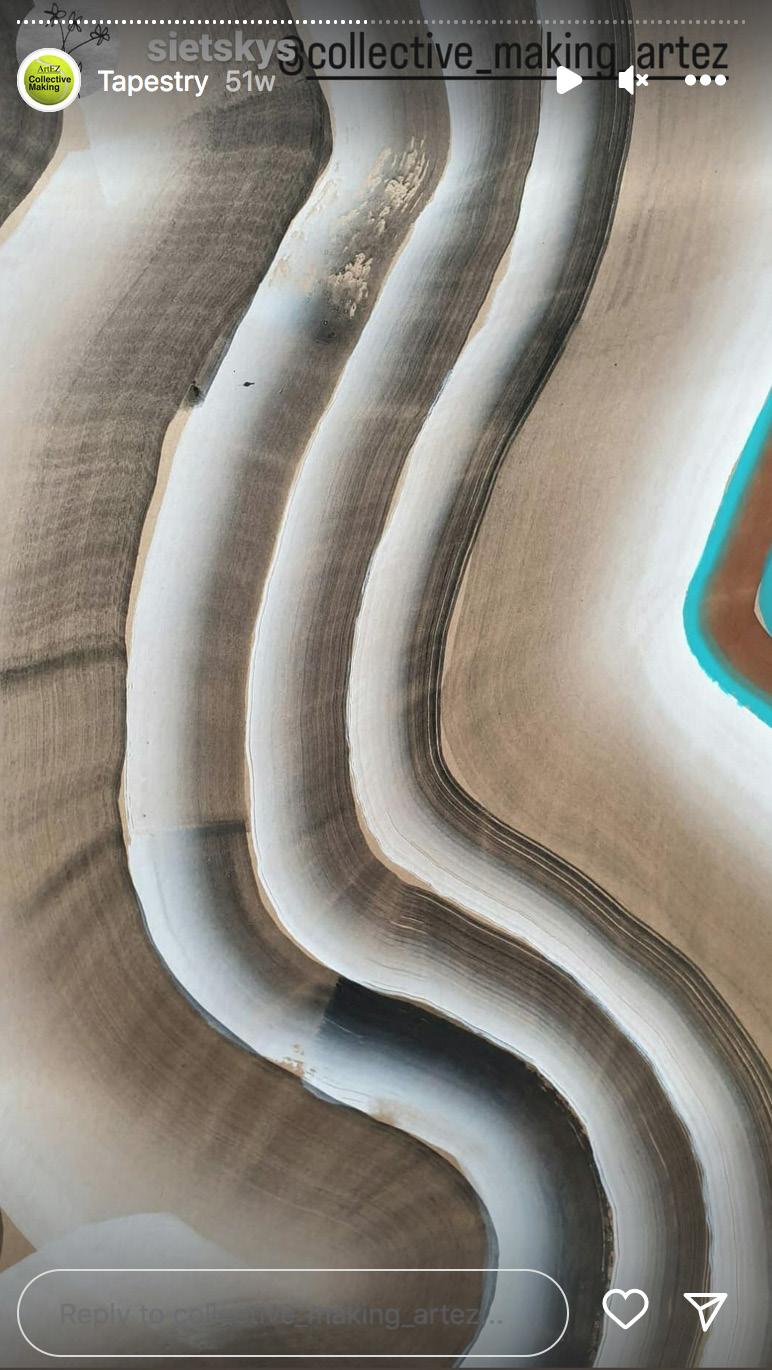

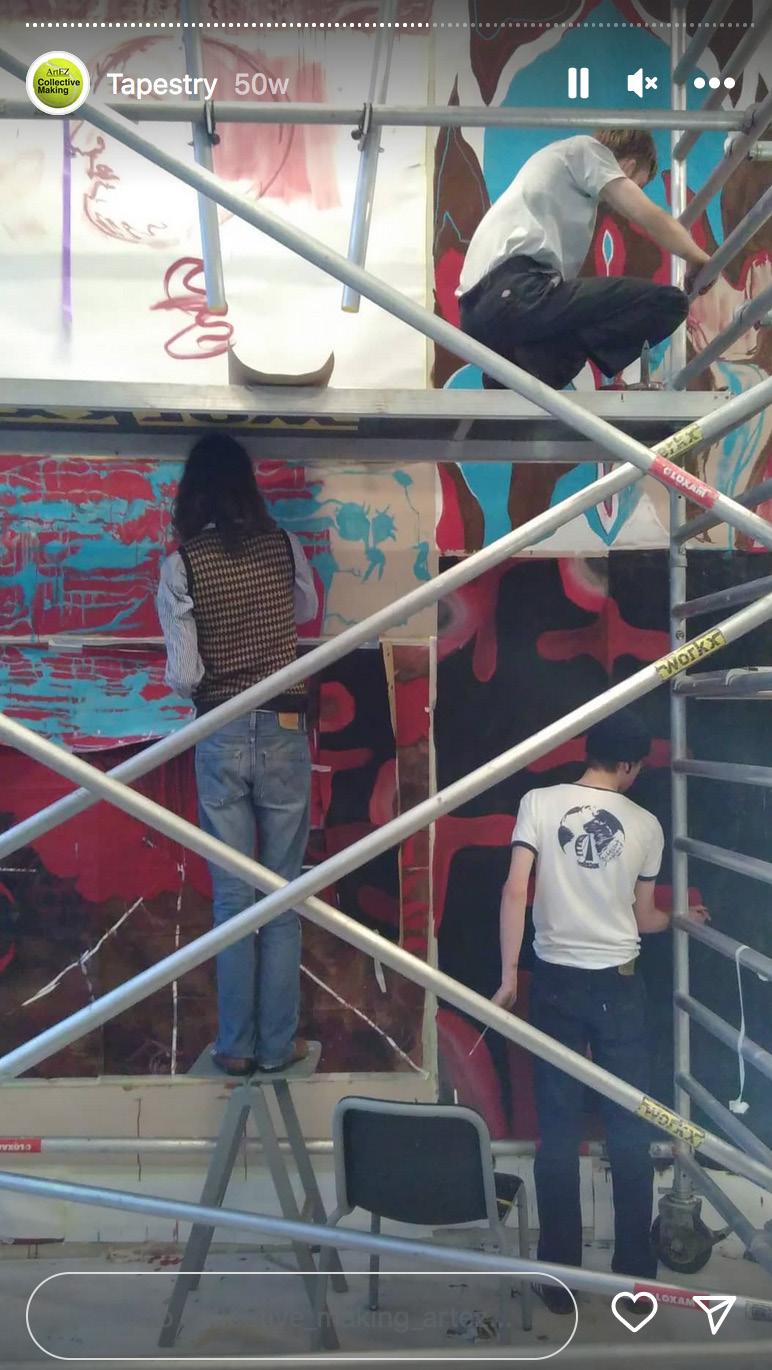

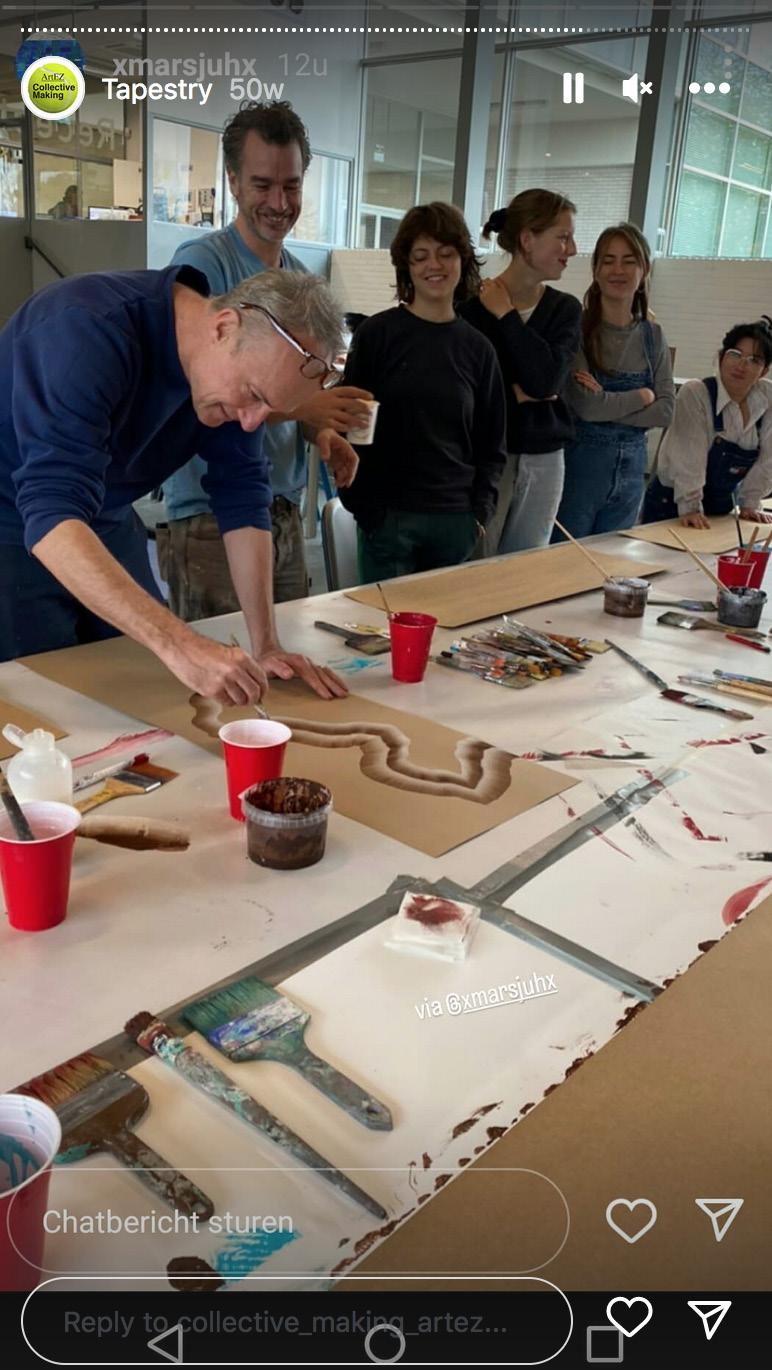


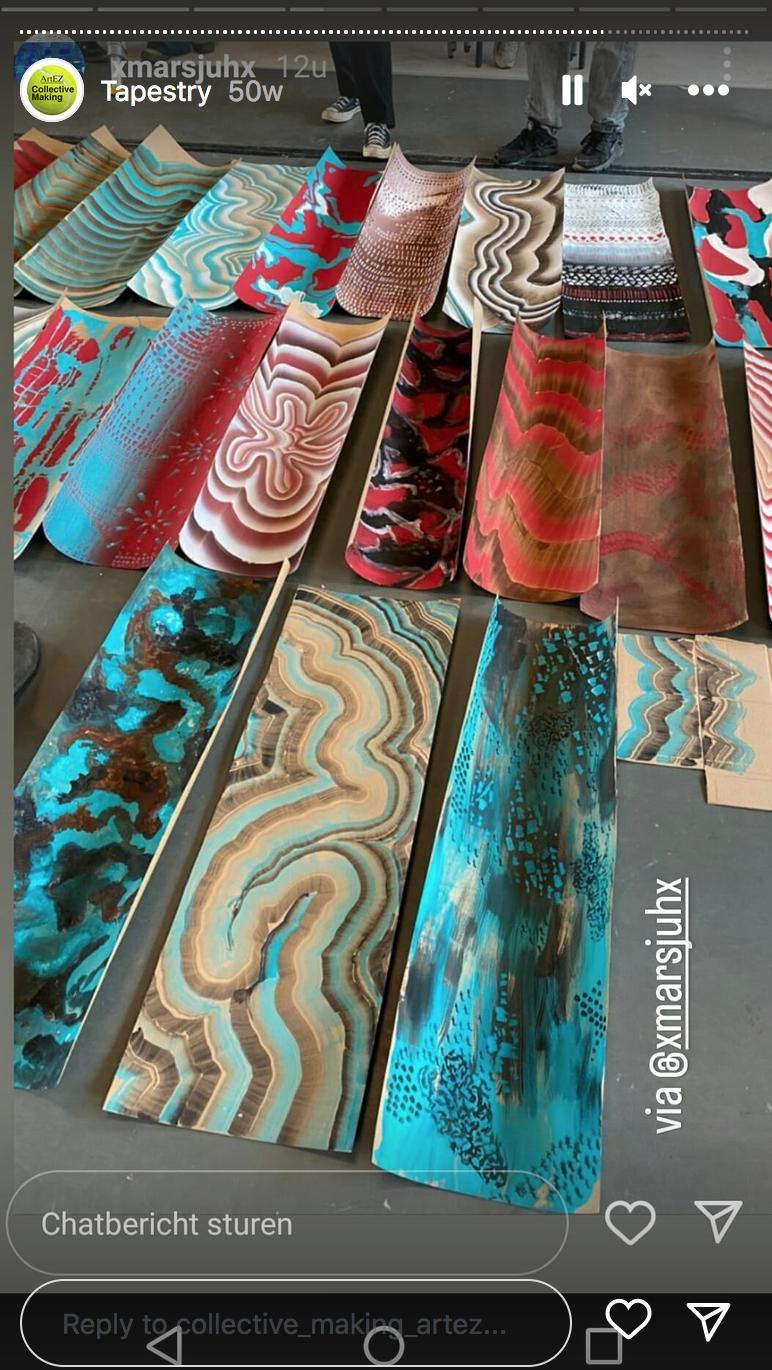



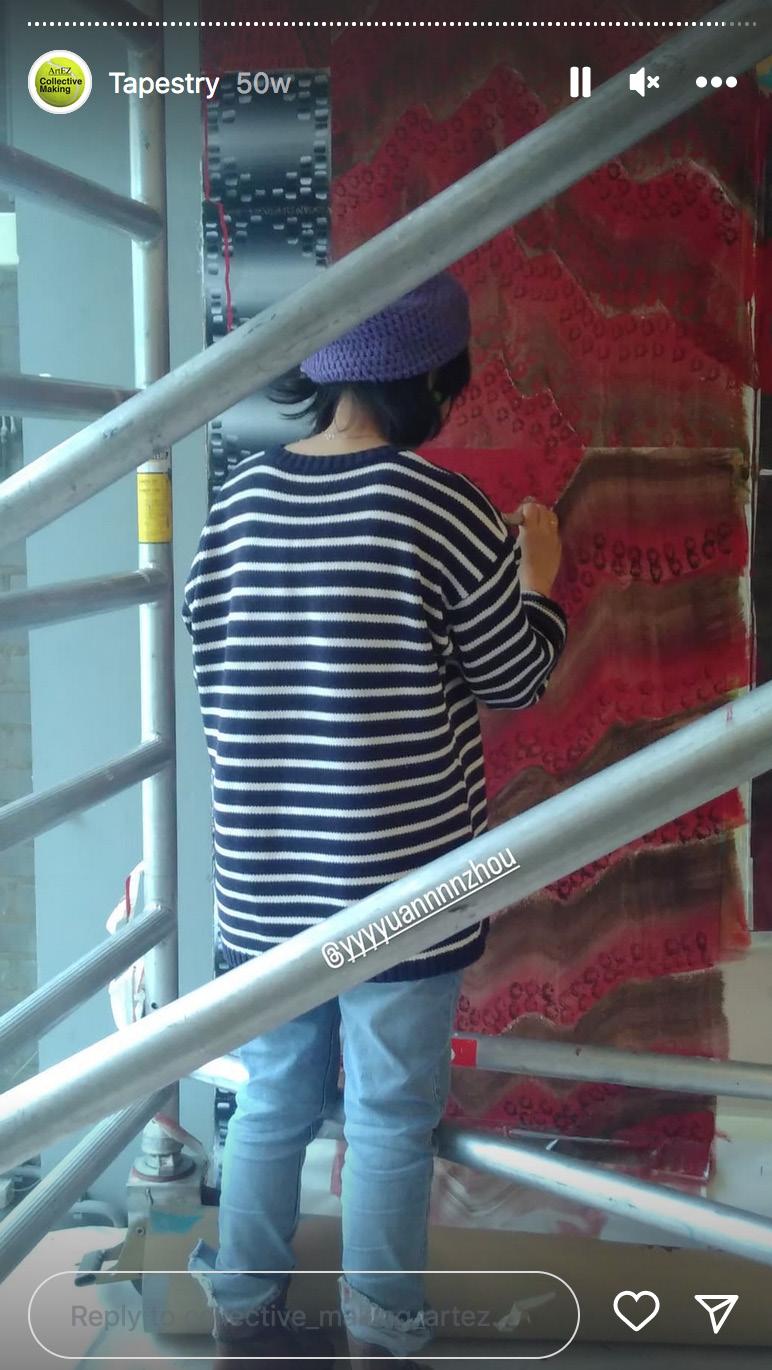
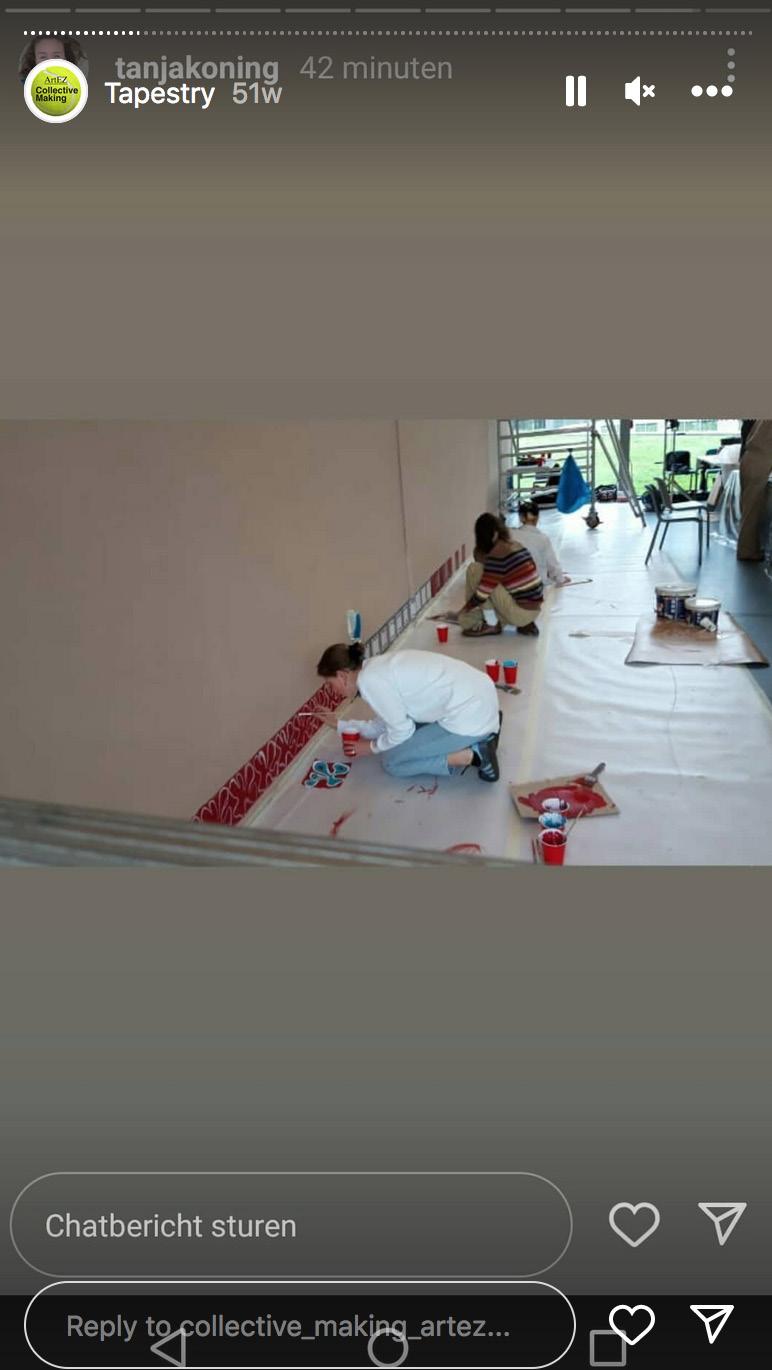

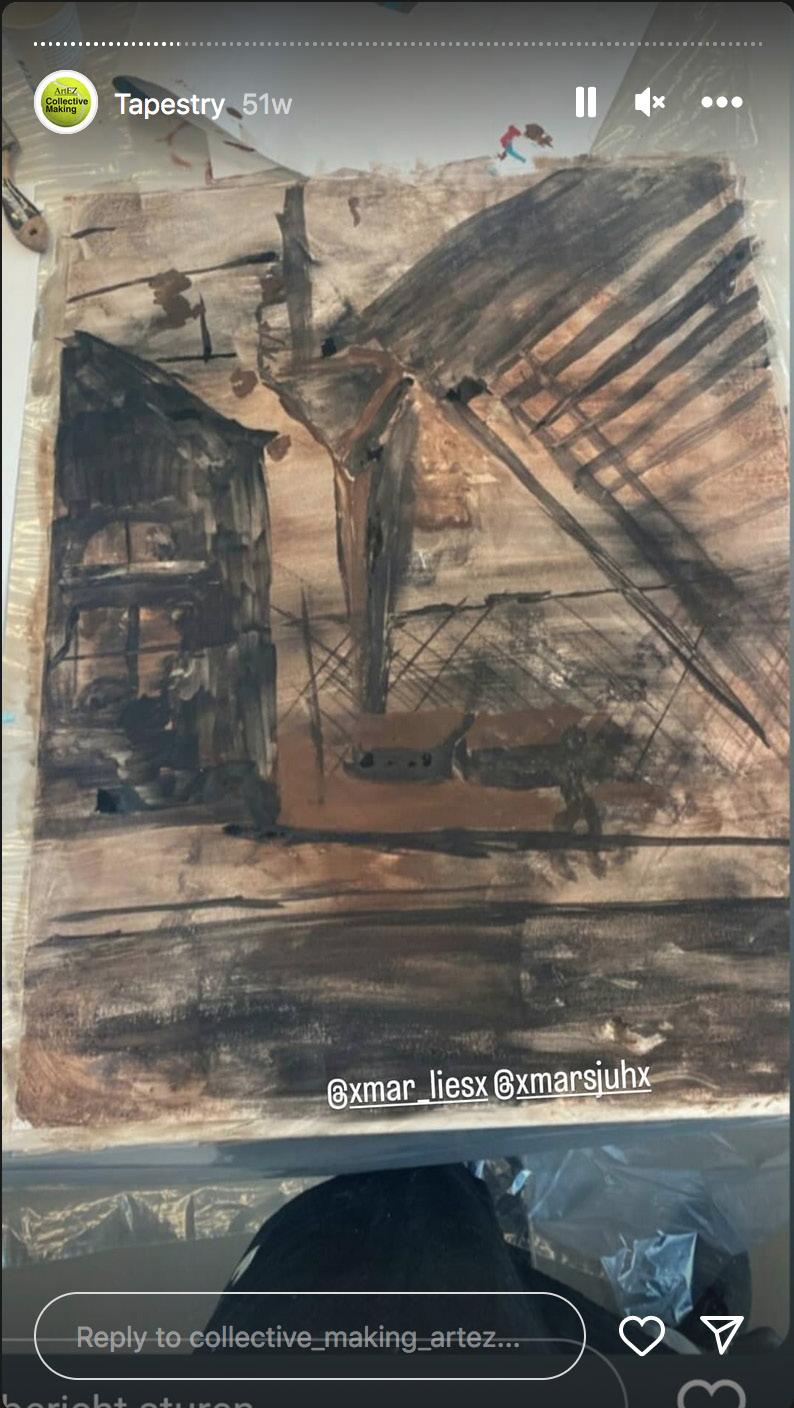

 ↑ Photo: Collective Making. ↑ Photo: Lisa Michelle Bakker. ↑ Photo: Collective Making. ↑ Photo: Maarten Bremer. ↑ Photo: Maarten Bremer.
↑ Photo: Collective Making.
↑ Photo: Collective Making. ↑ Photo: Collective Making.
↑ Photo: Collective Making. ↑ Photo: Lisa Michelle Bakker. ↑ Photo: Collective Making. ↑ Photo: Maarten Bremer. ↑ Photo: Maarten Bremer.
↑ Photo: Collective Making.
↑ Photo: Collective Making. ↑ Photo: Collective Making.
















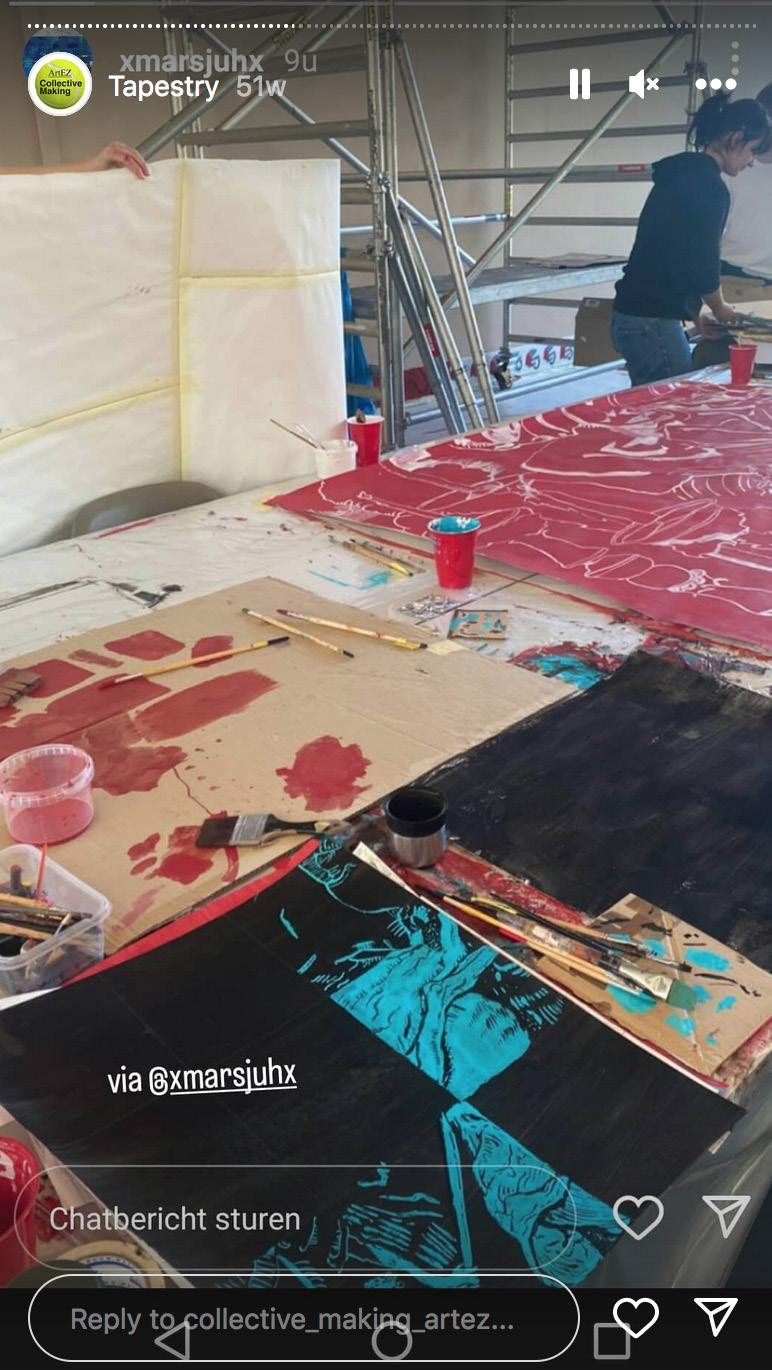
 ↑ Photo: Maarten Bremer. ↑ Photo: Maarten Bremer. ↑ Photo: Collective Making. ↑ Photo: Lisa Michelle Bakker. ↑ Photo: Collective Making.
↑ Photo: Collective Making. ↑ Photo: Collective Making. ↑ Photo: Collective Making. ↑ Photo: Sietske Schoute. ↑ Photo: Collective Making.
↑ Photo: Maarten Bremer. ↑ Photo: Maarten Bremer. ↑ Photo: Collective Making. ↑ Photo: Lisa Michelle Bakker. ↑ Photo: Collective Making.
↑ Photo: Collective Making. ↑ Photo: Collective Making. ↑ Photo: Collective Making. ↑ Photo: Sietske Schoute. ↑ Photo: Collective Making.

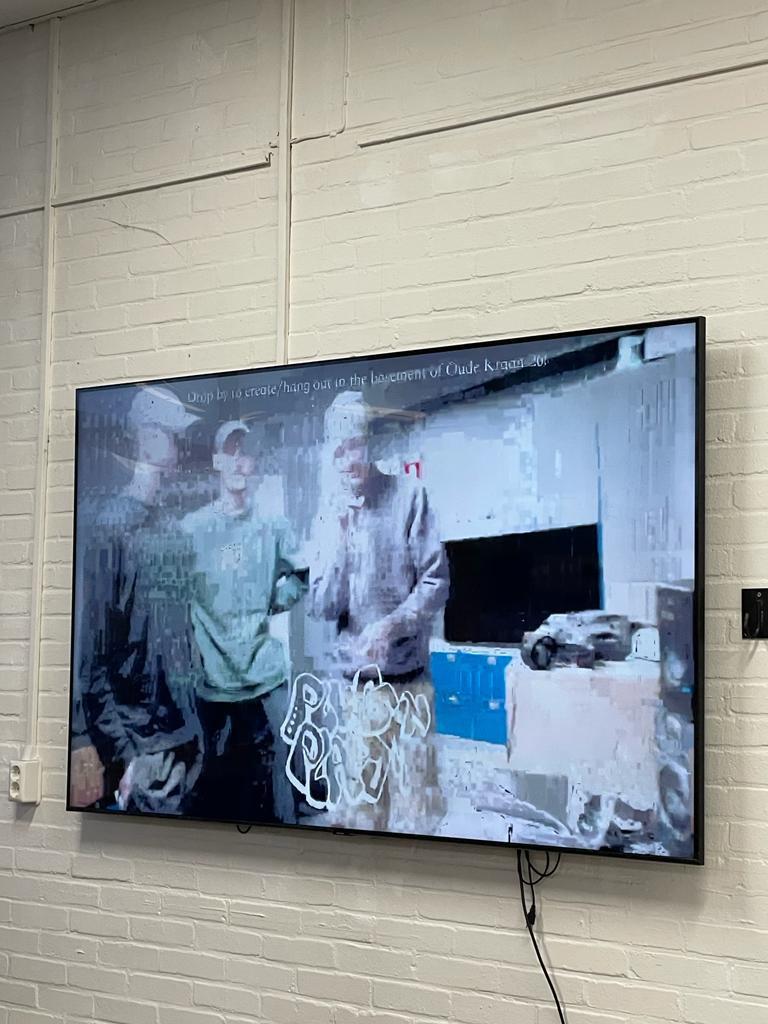
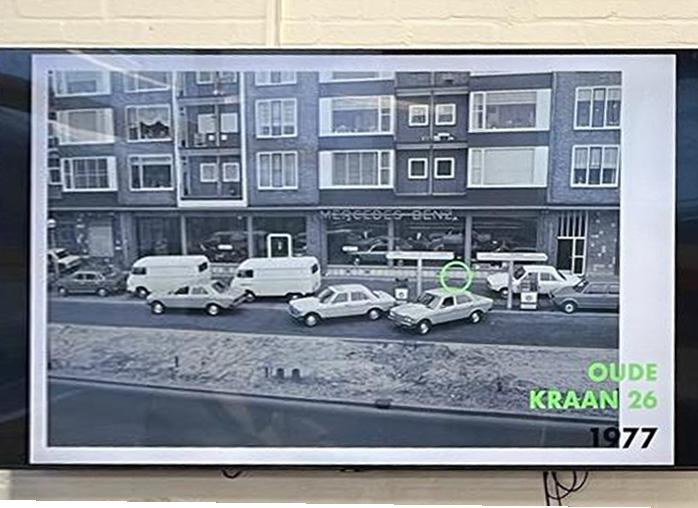



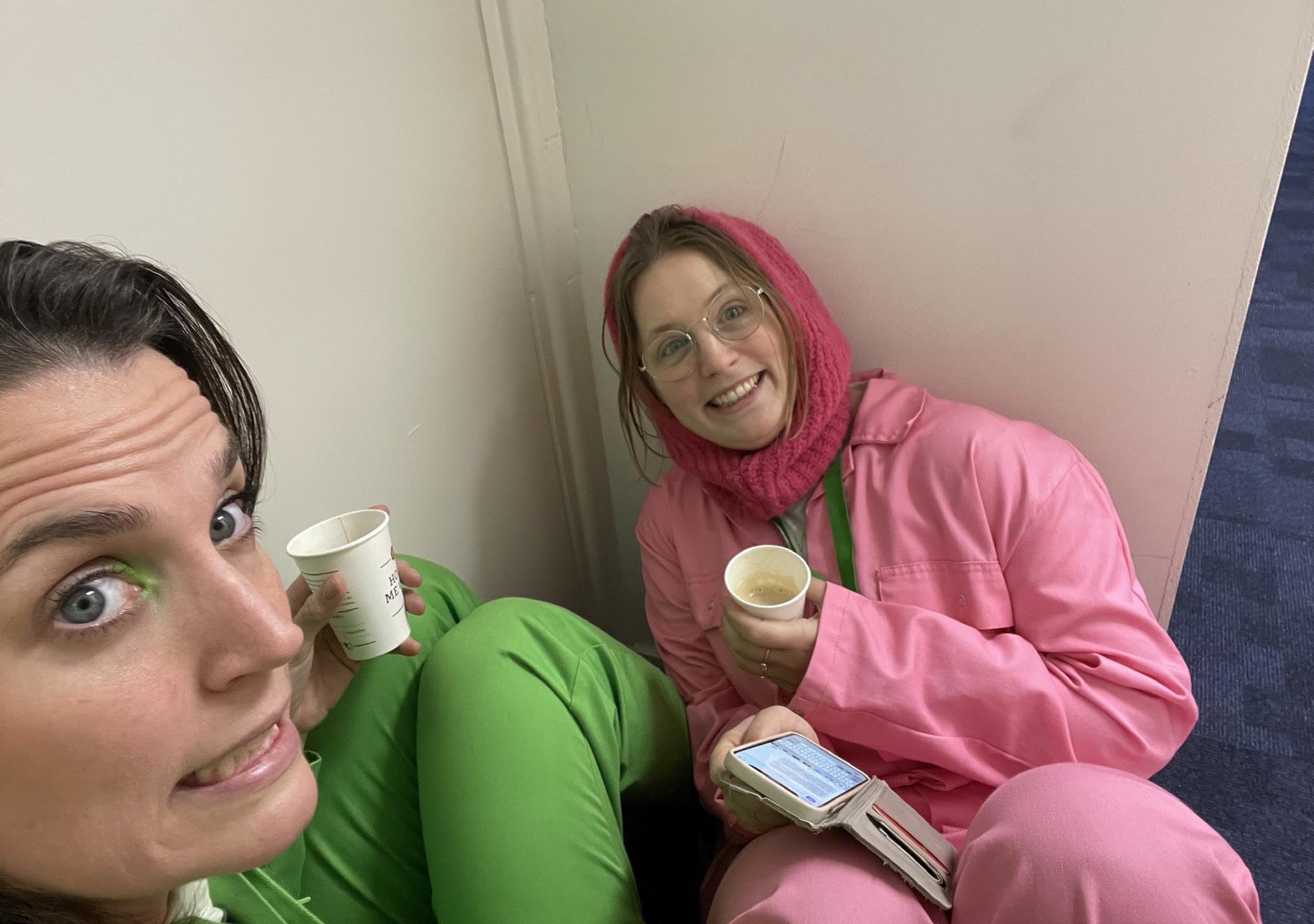


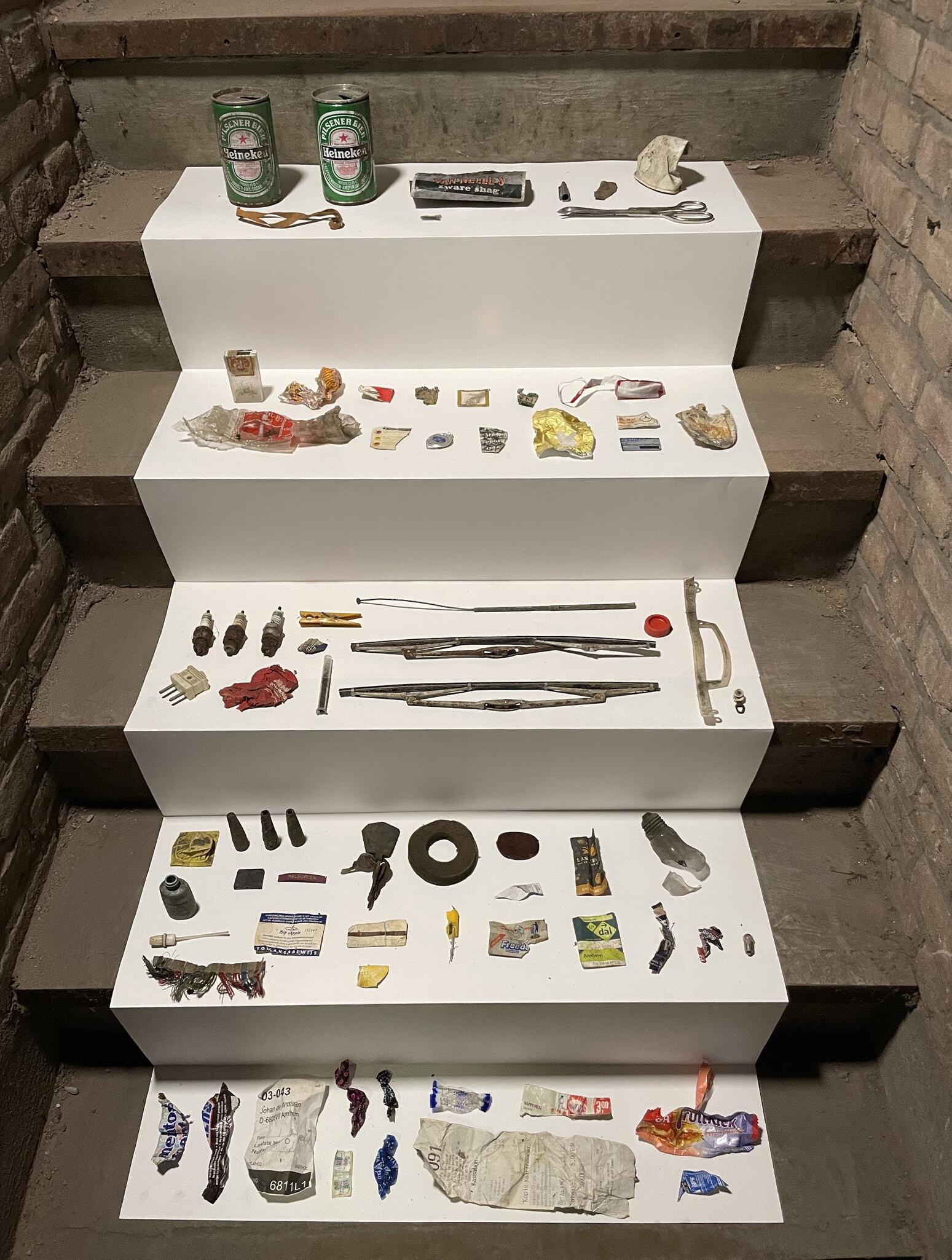
 ↑ Photo: Questions Collective.
↑ Photo: Questions Collective.
↑ Photo: Questions Collective.
↑ Photo: Questions Collective.
↑ Photo: Questions Collective.
↑ Photo: Questions Collective.
↑ Photo: Questions Collective.
↑ Photo: Questions Collective.

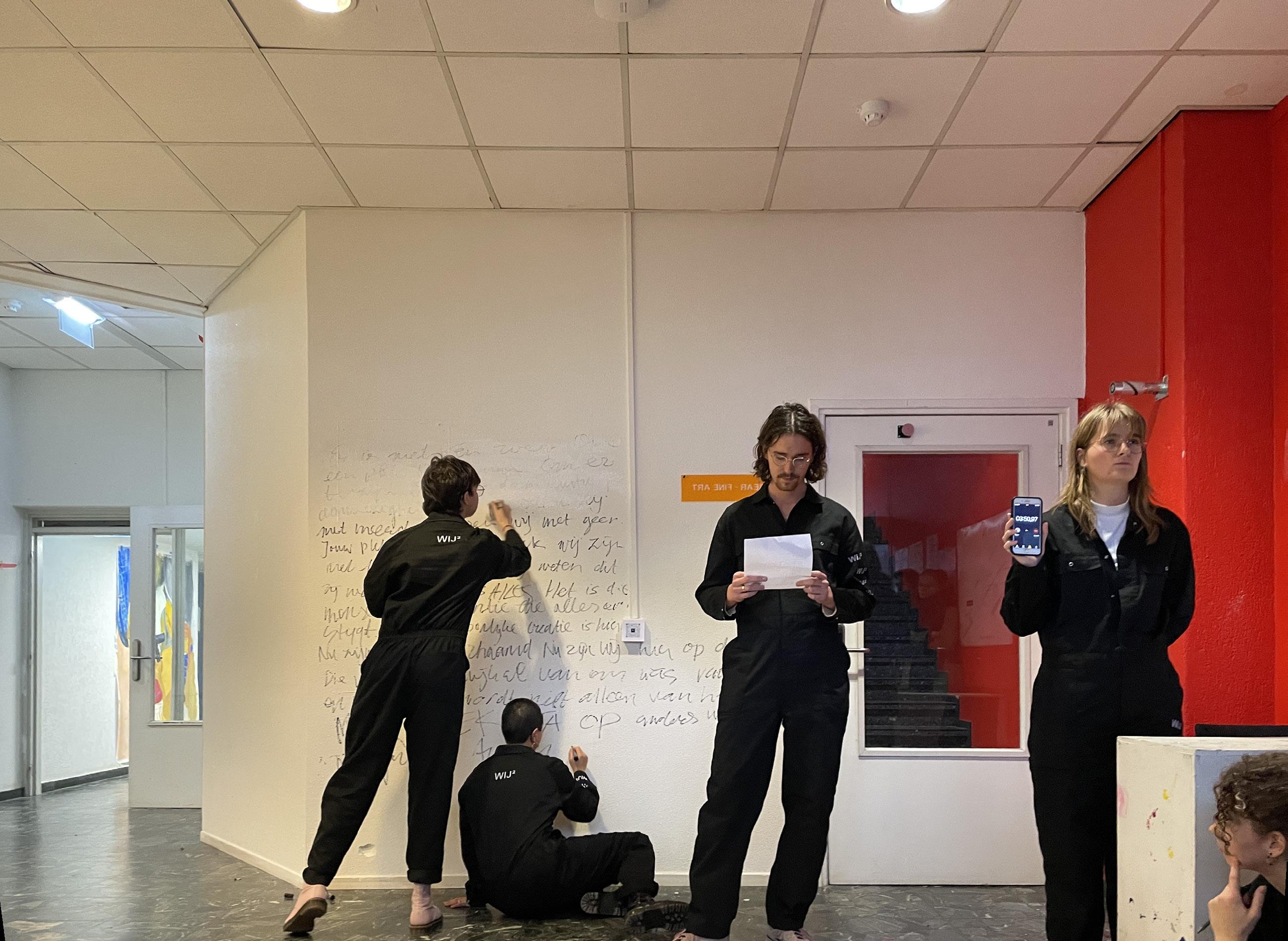





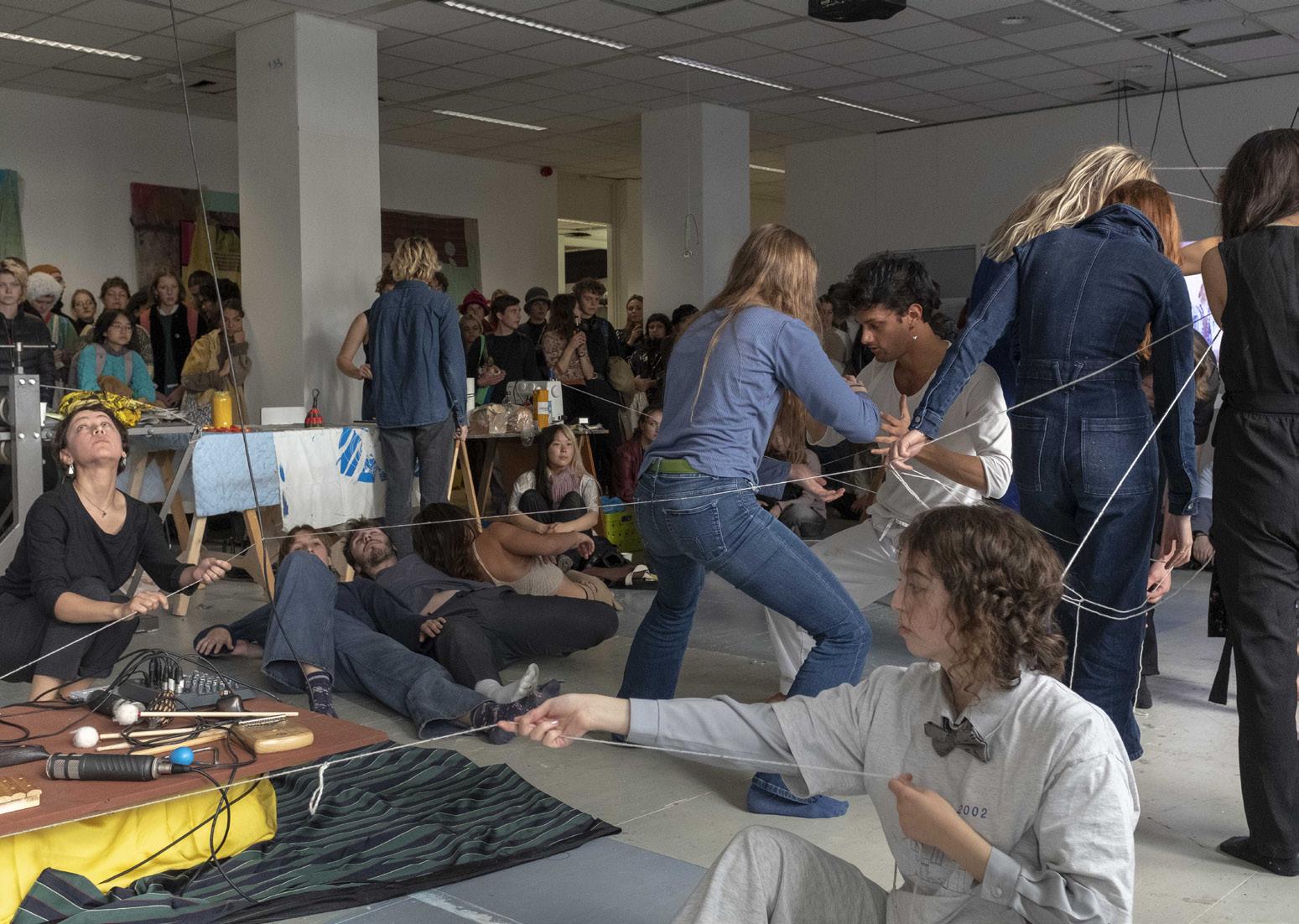
 ↑ Photo: Jochem van Laarhoven.
↑ Photo: it is part of an ensemble.
↑ Photo: Jochem van Laarhoven.
↑ Photo: Jochem van Laarhoven.
↑ Photo: it is part of an ensemble.
↑ Photo: Jochem van Laarhoven.






 ↑ Photo: it is part of an ensemble.
↑ Photo: Jochem van Laarhoven.
↑ Photo: Jochem van Laarhoven.
↑ Photo: Ina Darakchieva. ↑ Photo: Valerie Ludwig. ↑ Photo: Lotte Driessen. ↑ Photo: Maxim Ventulé.
↑ Photo: it is part of an ensemble.
↑ Photo: Jochem van Laarhoven.
↑ Photo: Jochem van Laarhoven.
↑ Photo: Ina Darakchieva. ↑ Photo: Valerie Ludwig. ↑ Photo: Lotte Driessen. ↑ Photo: Maxim Ventulé.





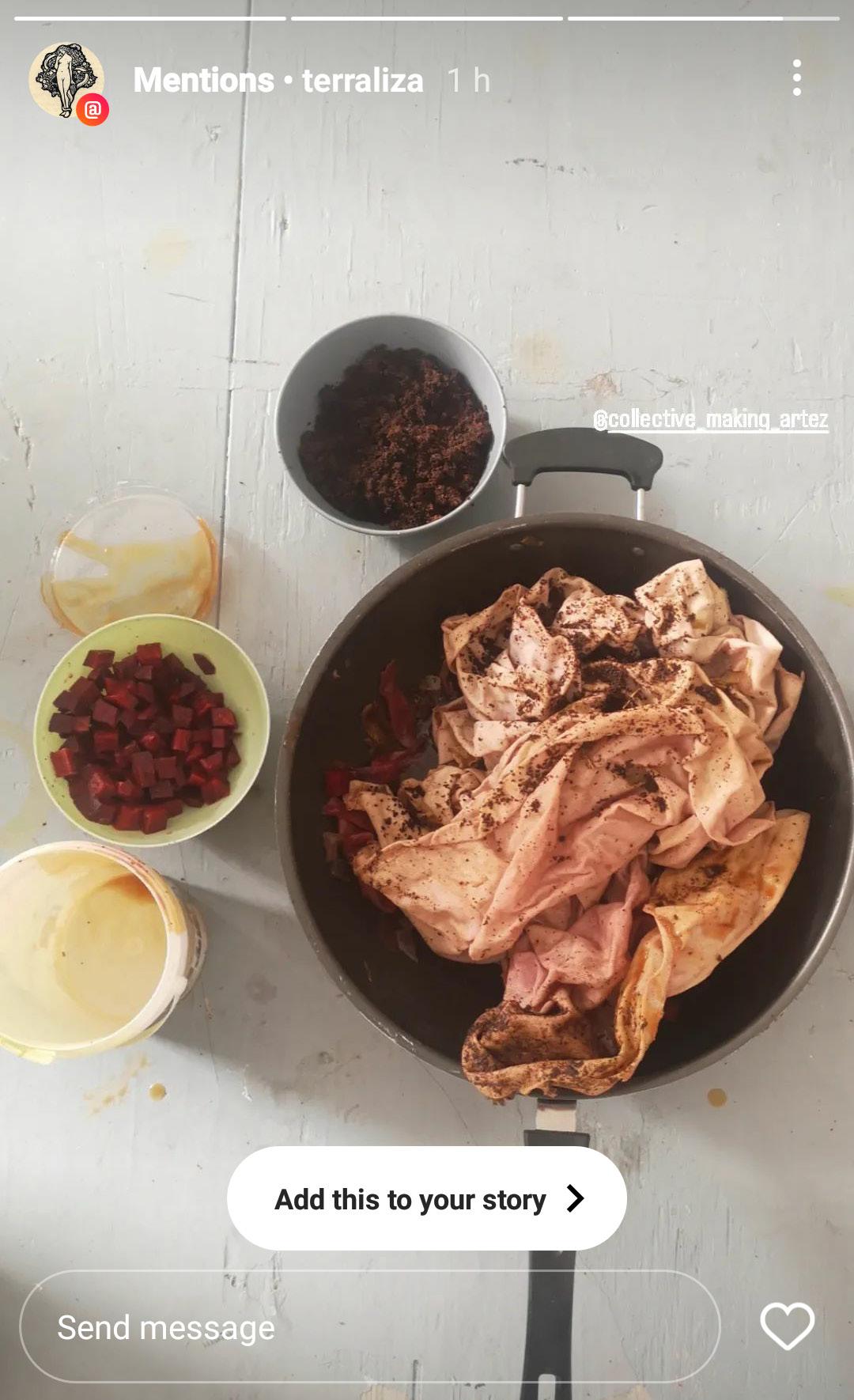 ↑ Photo: it is part of an ensemble.
↑ Photo: Terra van Dorst. ↑ Photo: Lotte Driessen.
↑ Photo: it is part of an ensemble.
↑ Photo: Terra van Dorst. ↑ Photo: Lotte Driessen.











 ↑ BOYBAND, de literaire boyband Adriaan van Discotheek, 2023. Photo: Wilco Lamers.
↑ BOYBAND, de literaire boyband Adriaan van Discotheek, 2023. Photo: Wilco Lamers.







 ↑ Lowrey Foley McClane Team Shot. Photo: Lowrey Foley McClane.
↑ Lowrey Foley McClane Team Shot. Photo: Lowrey Foley McClane.









